What Images Might Female Generals Have in TV Dramas and History?

Having grown accustomed to the images of various beauties adorned with rouge and makeup, when it comes to the hanfu images of female generals, do you have any that are particularly impressive? For instance, “Deng Chanyu“ in the movie Creation of the Gods II: Demon Force and “Hua Mulan” in Mulan are both extremely well-known and heroic and dashing images of female warriors. What are the characteristics of the Hanfu worn by these female generals in film and television works? Or, what are the commonalities in their styling? If you’re interested, feel free to read on.
I. The Styling of Female Generals in Real History
Recent ancient costume idol dramas such as Mountain and River Pillow, Legend of The Female General, Fated Hearts, etc., all depict female generals with high ponytails. In Chinese history, there have also been many female generals.
Well-known ones include Fu Hao, Hua Mulan, Princess Pingyang, and so on. Their images in history are by no means as slender and tall as those shown in film and television dramas. Instead, they were of robust build, standing over 1.7 meters tall. When fully clad in armor, it was impossible to tell that they were women. Their real body shapes should be similar to the styling portrayed by the blogger in the picture below.
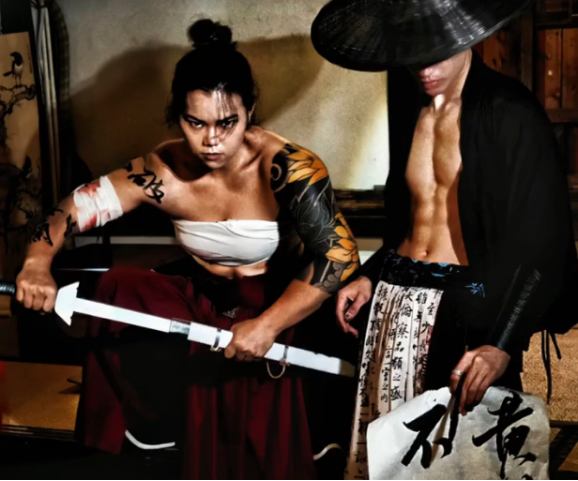
II. The Styling of Female Generals in Classic Film and Television Dramas
So, why do the female warriors or female generals in film and television dramas all have high ponytails and “battle-damaged makeup,” creating an image that seems to be mass-produced? Doesn’t it hurt when the high ponytail slaps the face while practicing martial arts? Then why is this the common image?
Perhaps the makeup artists are too lazy to create differentiated designs in terms of styling. Here, we can make a comparison. Let’s shift our focus back to the styling of ancient costume dramas 50 years ago. The most classic one is probably the image in the film A Touch of Zen.
In 1970, the actress Hsu Feng starred in A Touch of Zen, and became famous for this film, establishing the basic character setting of her as a cold and glamorous “female warrior.” As the first Chinese-language martial arts film to win a technical award at the Cannes Film Festival, we can actually see a lot of hanfu dress designs regarding the styling of the female warrior in the manuscripts.
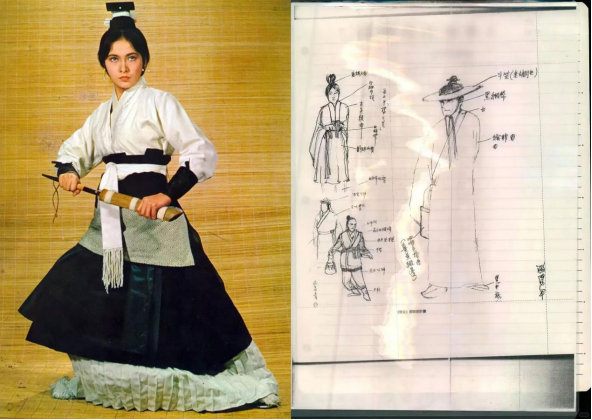
It can be seen that in the image design sketches, she has a high coiffure, which can be paired with a headscarf or a bamboo hat. During her 15-year career on the screen, she starred in approximately 50 films, all portraying the image of a female martial artist. With such capable attire and hairstyle, she vividly presented an independent, self-reliant, powerful, and highly assertive character. In the final revenge scene, she perfectly embodied the image of a “female martial artist” who was decisive and never hesitant.
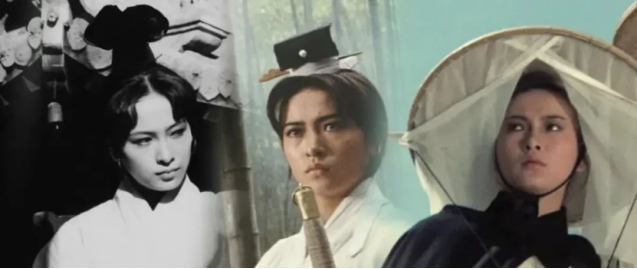
Let’s take a look at the images of female swords-woman in some other classic film and television works. Almost none of them are shown with ponytails. Although they have their hair in updos or half-updos, and with some accessories added, one can still feel the distinct personal characteristics brought out by the styling. In fact, these styles can also accentuate their armed and heroic images.
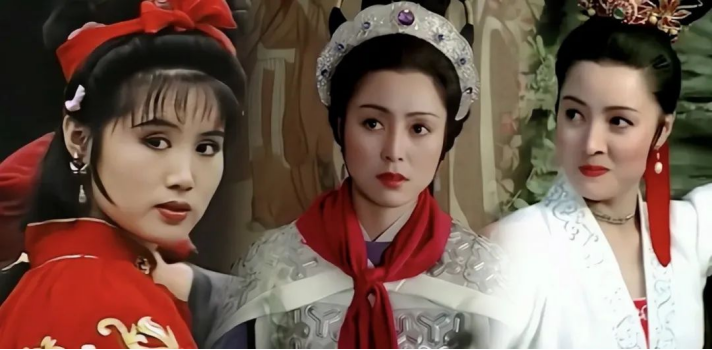
The ponytail hanfu hairstyle, although very convenient for us nowadays since we have rubber bands to tie our hair tightly, was somewhat difficult and impractical in ancient times. Firstly, in ancient times, people didn’t use highly elastic rubber bands to hold their hair in place. Instead, they used hairbands and hair ropes. Tying a high ponytail wasn’t stable and it was very likely to come undone. In fact, if you were to tie it by dividing the hair into sections, it wasn’t any simpler than creating a regular, everyday hairstyle.
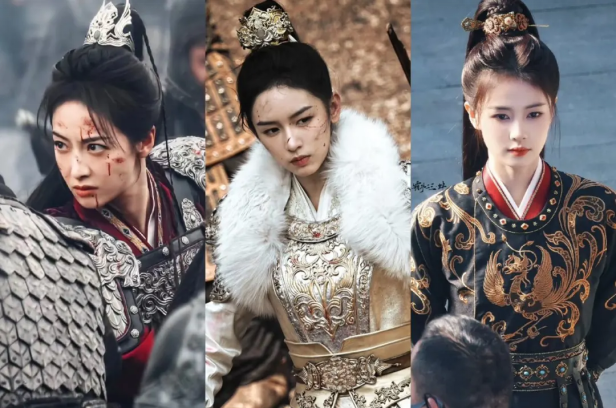
III. The Origin of “Jinguo”
Another reason is that this kind of ponytail hairstyle was actually prone to getting dirty with dust. After all, in ancient times, there were no modern cement bricks as tools to pave roads and reduce dust. We can see what appears to be a ponytail hairstyle in the brick paintings from the Wei, Jin, Southern and Northern Dynasties period. However, in such cases, people generally wrapped their hair with a piece of cloth or a kerchief, and only a section of the hair ends would be exposed.
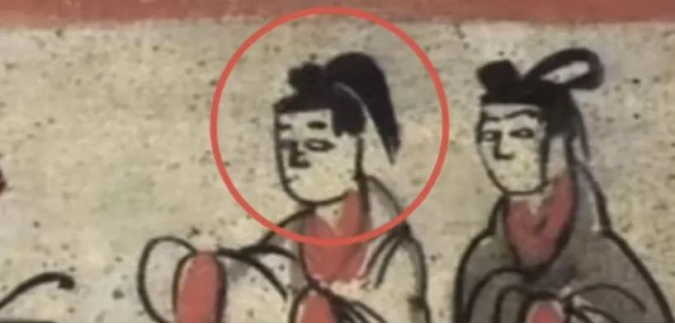
Therefore, instead of going for the hairstyle of a ponytail paired with a hair crown, it would be better to match it with “jinguo” ( a headdress for women in ancient China) according to normal logic. There is an old Chinese saying, “巾帼不让须眉”, which means “Women are not inferior to men.” Here, “jinguo” is used to refer to women. Firstly, it was an accessory worn by women, and later its meaning was extended to refer to females in general. It was first recorded in Records of Emperor Xuan of Jin Dynasty in the Book of Jin: “Zhuge Liang challenged Sima Yi to a battle several times, but Sima Yi refused to come out. So, Zhuge Liang sent him jingguo headdress and other ornaments typically worn by women as a mockery.”
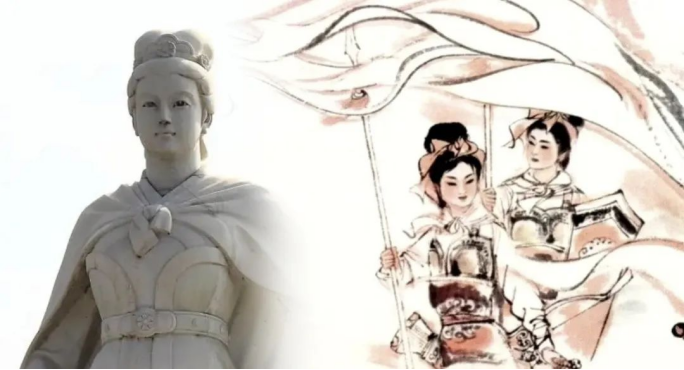
So, what kind of headwear exactly is “jinguo”? One explanation is that it usually has a frame made of metal or thin wooden or bamboo slices, which is then covered with a colorful long scarf. Since the Han Dynasty, it has been exclusively worn by women. Here, “jin” (the scarf) and “guo” (the base) are distinguished. “Guo” serves as the base, as shown in the picture above. Another opinion is that it is a headscarf, and this is the image mostly depicted in picture-story book. Unfortunately, due to the fact that the materials are not easy to preserve, it is difficult for the actual objects of “jinguo” to have been passed down to this day.
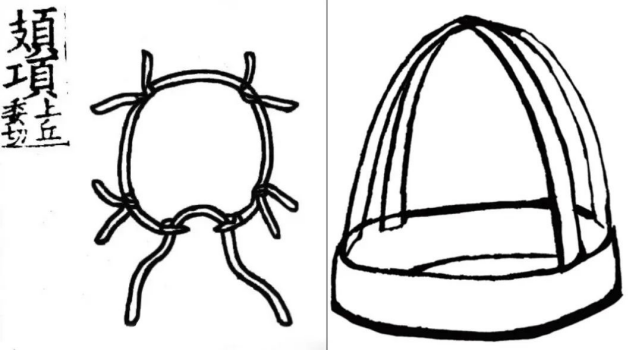
However, we can still catch a glimpse of its elegance through some precious cultural relics. For example, the images on the Changxin Palace Lamp from the Western Han Dynasty (on the left) and the Nursing Maid Figurine from the Eastern Han Dynasty (on the right) vividly showcase the graceful posture of women wearing “jinguo” during the Han Dynasty.
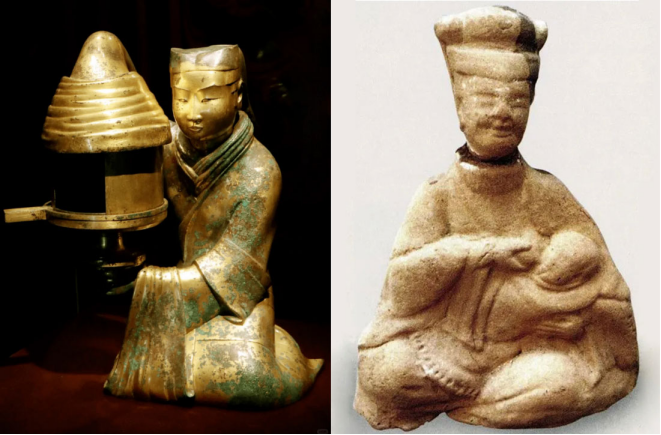
Summary
Those Chinese heroines who have been renowned throughout the ages, such as Fu Hao, Hua Mulan, Madam Xian, Mu Guiying, Liang Hongyu, Qin Liangyu… Each of their names commands great respect. They have left marks of their battles in arenas beyond their families. However, you wouldn’t expect each of them to appear with a high ponytail. That’s precisely why we’re writing this article. After all, if some foreign friends who aren’t familiar with this part of history are misled, it would be quite regrettable.
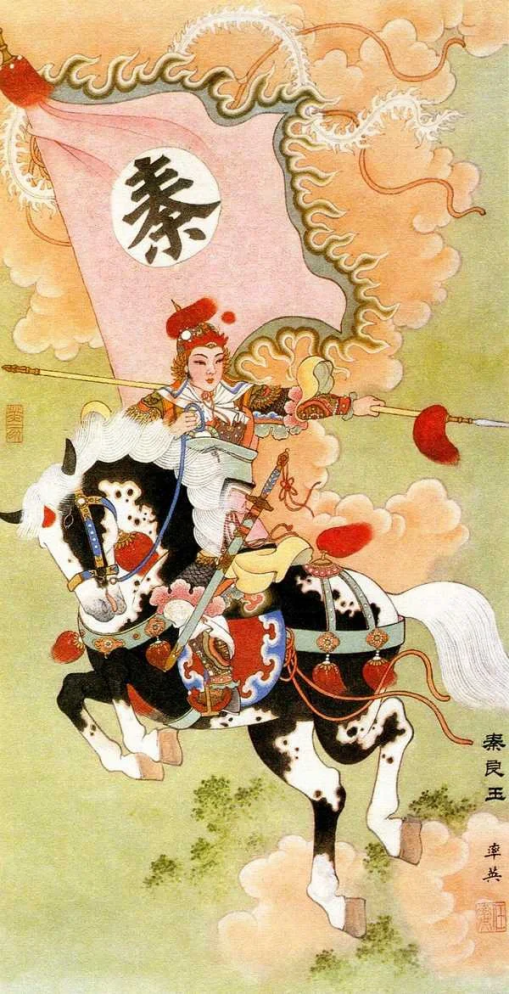
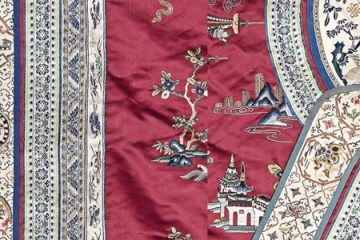
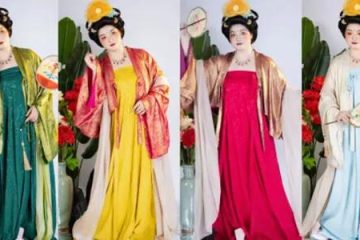
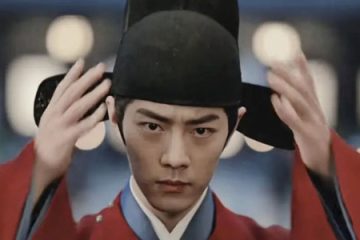
0 Comments